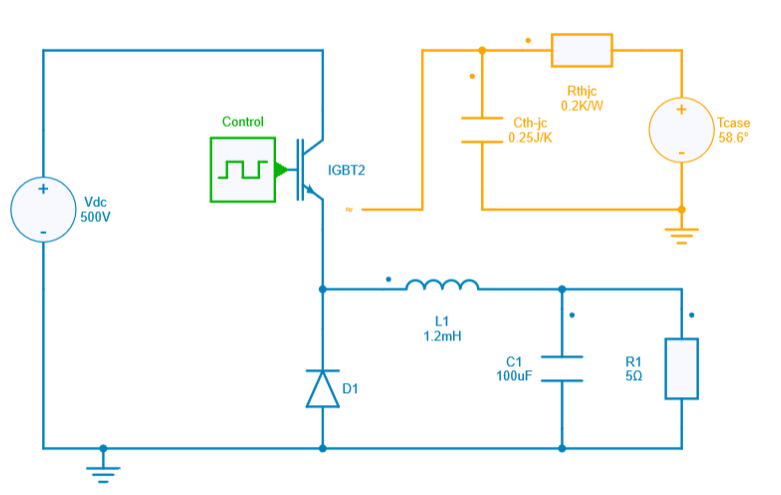Thermal analysis
Electrothermal modeling and analysis are key aspects of power converters especially for power semiconductor switches. Thus, SIMBA thermal analysis focuses on thermal loss of power semiconductors.
Semiconductor losses
A power semiconductor switch dissipates losses which can be split into two categories:
- conduction losses: when the power semiconductor conducts a current;
- switching losses: when the power semiconductor turns on or turns off.
Conduction losses
Conduction losses usually involve a voltage drop V_{drop} when the switch conducts a current i: V_{drop} = V_f + R_{on} * i, where V_f and R_{on} can depend on the junction temperature of the power semiconductor. SIMBA allows the user to define this voltage drop with a lookup table depending on the current and the temperature as shown below:
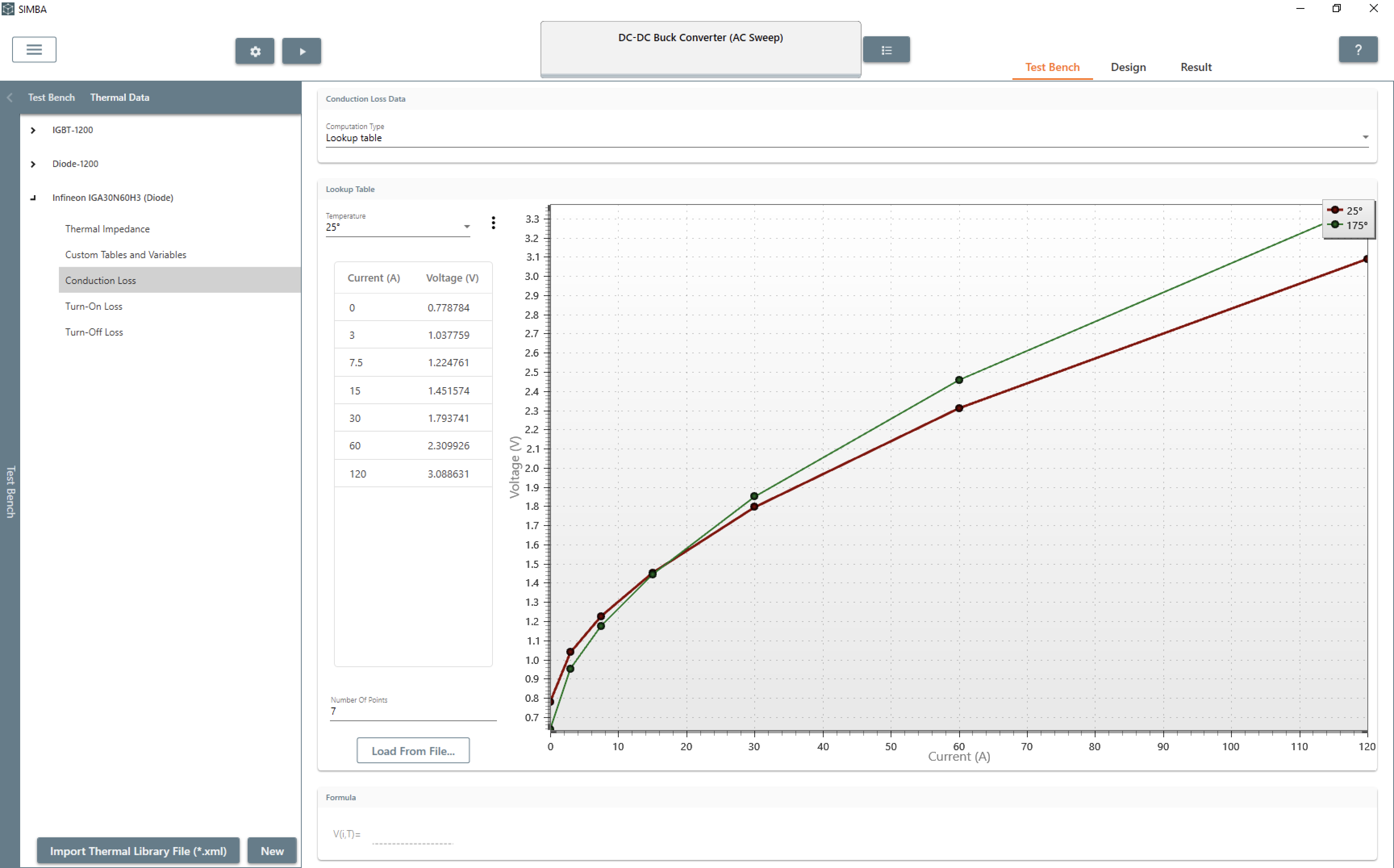
This voltage drop should be defined assuming electrical conventions shown below:

Switching losses
Switching losses are due to the turn-off and turn-on of a power semiconductor. They can be easily computed from switching energies which are usually provided on manufacturer datasheets for IGBTs or MOSFETS-SiC which mainly depend on the block voltage, current and junction temperature: E_{on}(v_{block}, i_{on}, T_j) and E_{off}(v_{block}, i_{off}, T_j) respectively for the turn-on and turn-off of an IGBT or a MOSFET; E_{rr}(v_{block}, i_{off}, T_j) for the turn-off of a diode.
SIMBA allows the user to define these energies with a lookup table depending on the block voltage, the current and the temperature as shown below:

These energy losses should be defined assuming electrical conventions shown below:

Lookup Tables and Formula
Formula
Conduction and switching losses can also be defined using formulas such as:

For the conduction loss formula, the following variables can be used to calculate the voltage drop:
- i: current (A)
- T: Temperature (Celsius)
And for the switching loss formula, the following variables can be used to calculate the switching energy:
- v: voltage (V)
- i: current (A)
- T: Temperature (Celsius)
Lookup Table and Formula
It is possible to use both a lookup table and a formula to calculate switching or conduction losses.

In this case, an additional variable is available in the formula definition:
- v: voltage (Conduction losses only). The voltage value is interpolated using the lookup table at each time step and is available in the formula definition.
- E: Energy (Switching losses only). The ernergy value is interpolated using the lookup table at each switching event and is available in the formula definition.
Custom Variables and Tables
It is possible to define custom variables which can be used in formulas. The values of the custom variables are defined by the user in the device properties.
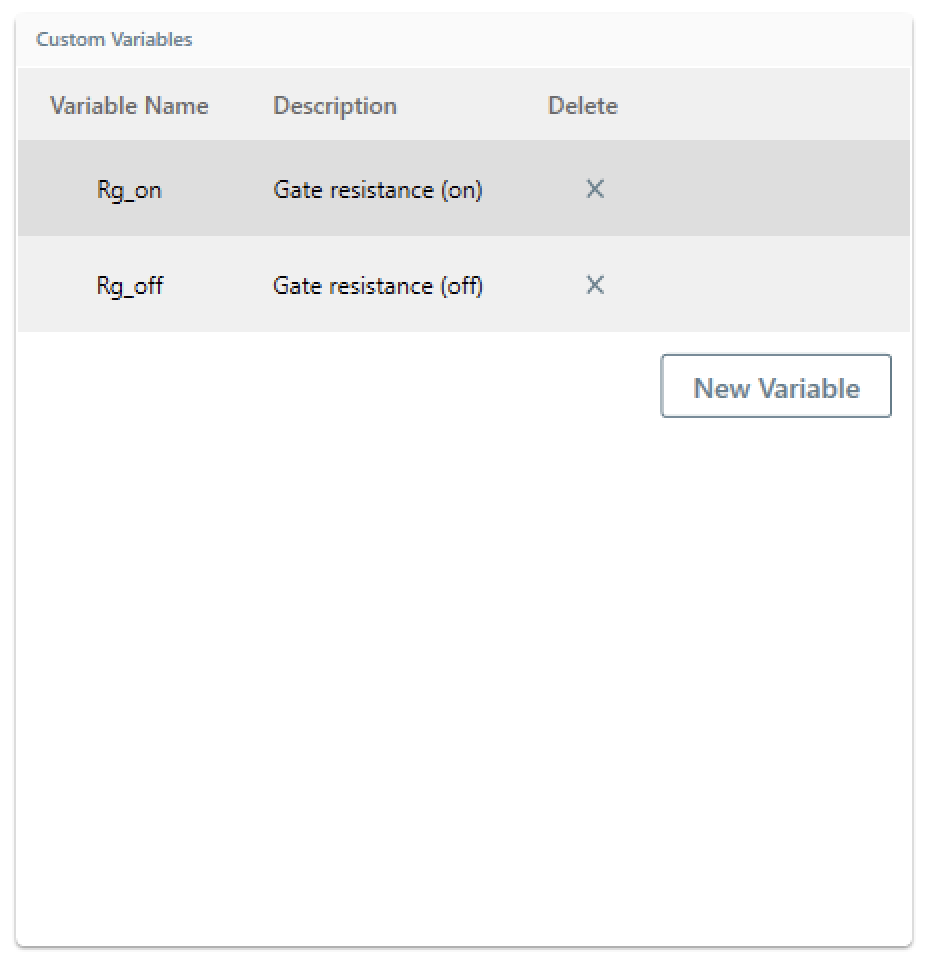 |
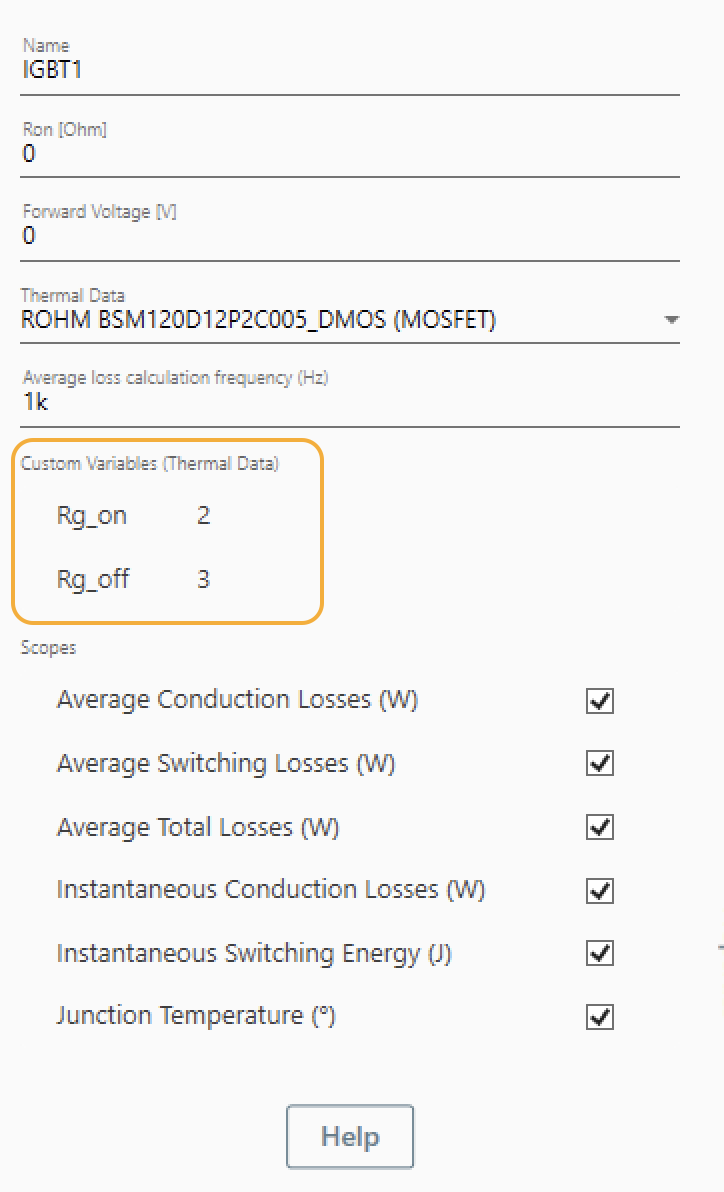 |
|---|---|
| Variable Definition | Variable value |
Custom Lookup Tables (1D, 2D and 3D) can also be defined and used in the formulas using the "lookup()" methods.

Thermal Impedance
The thermal impedance between the junction and the case of the semiconductor can be defined here.
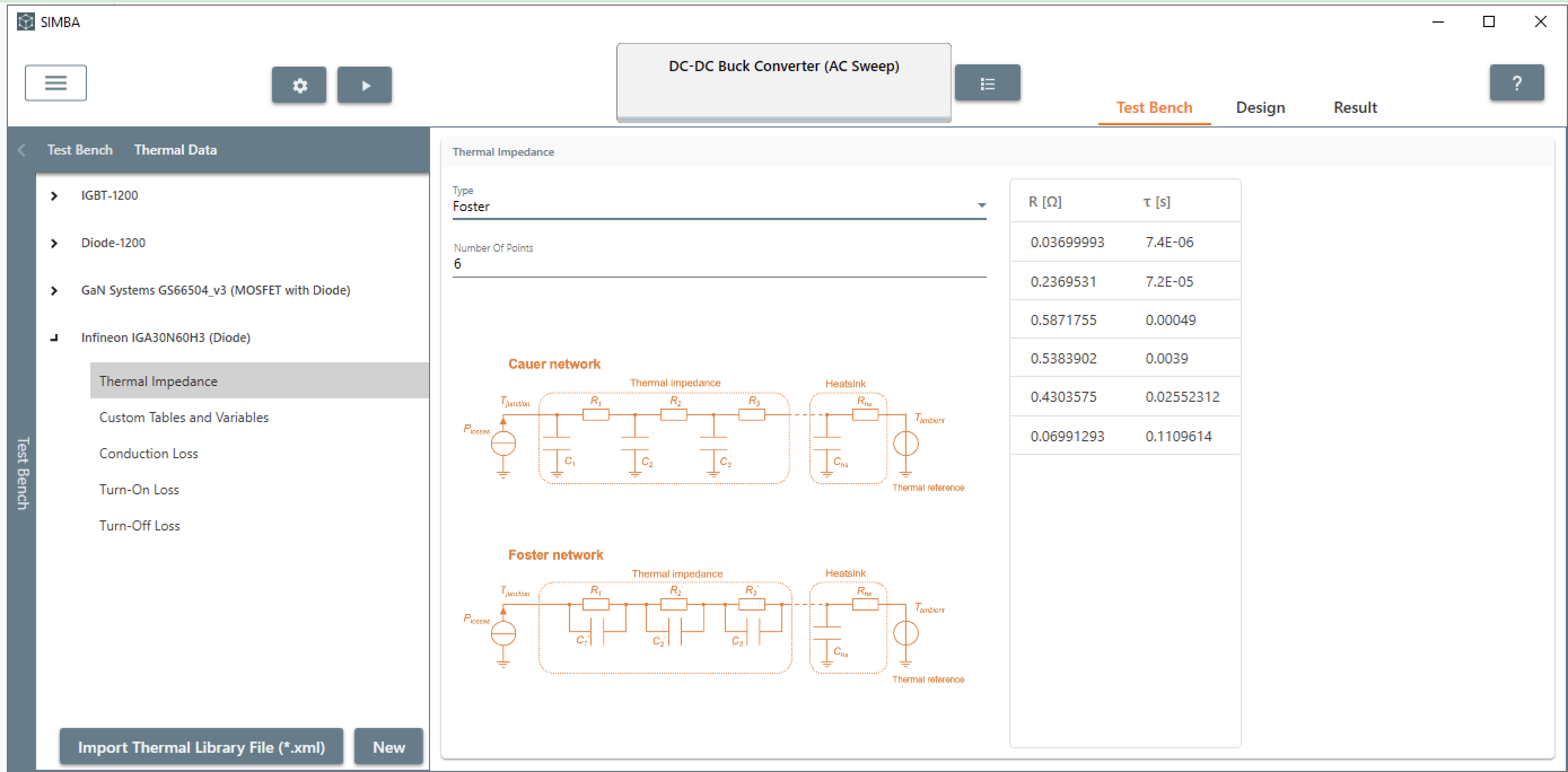
Both Cauer and Foster models of thermal impedance can be modeled.

Loss calculation
During the simulation, SIMBA computes the different currents, voltages and temperatures (i_{on}, i_{off}, v_{block}, T_j) which are then used to compute switching and conduction losses from the tables which have been described above. Delaunay's triangulation and a barycentric interpolation are used to calculate the losses from the provided data. SIMBA uses this interpolation when these input values (i, i_{on}, i_{off}, v_{block}$and also T_j) lie within the specified index range in the tables. If one of the currents of voltage input values lies out of range, SIMBA will perform an extrapolation. Temperature values used in the calculation are limited to T_{min} or T_{max} if we are out of the temperature limits.
Thermal data description
This description can be done in the Test Bench tab. Once a thermal data description has been created, it can be assigned to a power semiconductor switch (IGBT, MOSFET or diode).
Assigning a thermal data description
A thermal data description can be set in the property’s panel of a power semiconductor as shown below:
Import Thermal Library File (*.xml)
SIMBA supports the thermal library file format that is currently supported by many semiconductor manufacturers. The actual supported version is 1.3.
Average Loss Calculation Frequency
This parameter defines the frequency of the calculation of the average scopes of the semiconductor. This setting does not impact the simulation behavior.
Thermal circuit and determination of the junction temperature
Conduction and switching losses of a power semiconductor have to be collected and connected to a thermal circuit to determine the junction temperature of the power semiconductor. Thermal devices are available in the Thermal library.
